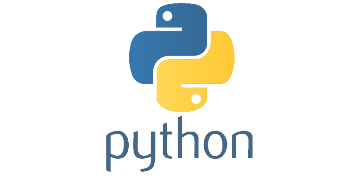Difference between Maximum Likelihood Estimation (MLE) and Maximum A Posteriori (MAP)
2022-06-21Understanding TF-IDF with Python example
2022-07-28In today’s article, we are going to discuss how PyPI lets developers share packages with other people who may wish to use that particular functionality in their own applications. Additionally, we are going to introduce a step-by-step guide to help you upload your Python package on PyPi so that it is available to every Python user. I’ll use a real end-to-end example so that all the steps are crystal clear.
PyPI
The Python Package Index, abbreviated as PyPI, is the official repository of software for the Python programming language. By default, pip — which is the most popular Python package manager — uses PyPI as the source for retrieving package dependencies.
PyPI lets you find, install and even publish your Python packages so that they are widely available to the public. More than 300,000 different packages are currently published in the index with more than 2,500,000 releases being distributed to users.
Step to make Python package available on PyPi
Step 1: Install pip
If you are using Python 2 ≥ 2.7.9 or Python 3 ≥ 3.4 pip should be already installed. But if for any reason you may need to install it simply run the commands below (instructions are suitable for Unix):
curl https://bootstrap.pypa.io/get-pip.py -o get-pip.py
python get-pip.py
And that’s it! You can ensure that pip is now installed as below.
$ python -m pip --version
pip X.Y.Z from .../site-packages/pip (python X.Y)
Step 2: Package Python code
I created a sample project on GitHub so that it’s easier to demonstrate how to publish your own packages on PyPI. Normally you’ll need to create at least the files below:
README.rst: It is highly recommended to include a README file where you should outline the basic functionality offered by your package. Additionally, you may also include installation instructions or a usage guide.- LICENSE.txt: It’s always best to include a license in the package you intend to make it widely available. For more options and details refer to the Licensing a Repository section of GitHub docs.
- setup.py: This file should be placed into the top-level directory of your project structure. In this file, you can specify configurations for your Python project. For more details, you can refer to the official documentation. The
setup.pyfile for our example project is as follows.
from setuptools import setup, find_packages
setup(
name='test_pypi_medium',
version='0.6',
license='MIT',
author="Giorgos Myrianthous",
author_email='email@example.com',
packages=find_packages('src'),
package_dir={'': 'src'},
url='https://github.com/iamirmasoud/test-pypi',
keywords='example project',
install_requires=[
'scikit-learn',
],
)
setup.cfg: This file contains default options forsetup.pycommands.
[metadata] description-file=README.md license_files=LICENSE.rst
The overall structure of our example project is shown below
. ├── LICENSE.txt ├── README.rst ├── setup.cfg ├── setup.py ├── src │ ├── test_pypi_medium │ │ ├── __init__.py │ │ └── example │ │ ├── __init__.py │ │ └── custom_sklearn.py ├── tests │ ├── __init__.py │ └── example │ ├── __init__.py │ └── test_custom_sklearn.py
Now we just need to publish our package on PyPI so that other users can install it on their local machines. Note that our example package depends on scikit-learn and this dependency is explicitly specified in setup.py file. Therefore, when users install your package using say pip, the specified dependencies will also be installed.
Step 3: Create the source distribution of the package
Now that our source code is structured and contains all the required files for packaging we can go ahead and create the source distribution.
A source distribution — commonly referred to as sdist — is a distribution that contains the setup.py file along with the source code and data files (as specified in the setup.py and/or setup.cfg)
You can create the source distribution of the package by running the command given below:
python setup.py sdist
If everything goes to plan should create a .tar.gz file under the newly created directory dist. In my case setuptools also added a MANIFEST file too.
Note: If by any chance you’ve got a warning similar to
Unknown distribution option: 'install_requires'
you can ignore it for now.
Step 4: Install twine
twine is a utility package that is used for publishing Python packages on PyPI.
pip install twine
Step 5: Create a PyPI Account
In order to publish a package on PyPI you have to create an account. You can do so by visiting this link. It’s completely free and to sign up you just need to provide your e-mail address, username, and password.
Step 6: Upload the source distribution on PyPI
Finally, we’ll now use twine in order to upload the created source distribution on PyPI.
twine upload dist/*
You will be prompted to type your username and password and your package will be finally made available on PyPI:
twine upload dist/* Uploading distributions to https://upload.pypi.org/legacy/ Enter your username: YOUR_USER_NAME Enter your password: YOUR_PASSWORD Uploading test_pypi_medium-0.6.tar.gz 100%|██████████████████████████████████████████████████████████████| 3.49k/3.49k [00:01<00:00, 2.17kB/s]View at: https://pypi.org/project/test-pypi-medium/0.6/
Voila! Our example package is now available on PyPI.
Installing the published package with pip
Now let’s verify that our package works as expected. As we already mentioned, the default source index of pip is PyPI. Therefore, our package can be installed directly from pip. To do so, run
pip install test-pypi-medium==0.6
The package should be successfully installed on your local machine. If you inspect the output you’ll also see that scikit-learn is also installed since it is a dependency that we also specified while we were packaging our source code.
Finally, we can verify that the package works as expected:
$ python3
from test_pypi_medium.example import custom_sklearn
custom_sklearn.get_sklearn_version()
'0.24.1'
References:
https://towardsdatascience.com/how-to-upload-your-python-package-to-pypi-de1b363a1b3
https://python-packaging.readthedocs.io/en/latest/minimal.html
https://medium.com/@joel.barmettler/how-to-upload-your-python-package-to-pypi-65edc5fe9c56

